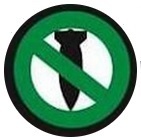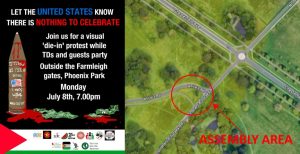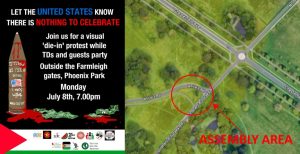UNPUBLISHED LETTER TO IRISH TIMES REGARDING HIROSHIMA AND NAGASAKI BOMBINGS
Sir,
It beggars belief that some people still try to defend the indefensible atomic bombing of Hiroshima and Nagasaki (Letters, 07 and 10 August).
Extensive scholarship, primarily from the US, ably demonstrates that the Japanese leadership wanted to surrender and had, through various avenues, sued for peace. Much of the US military knew this. General Dwight Eisenhower said, ‘Japan was at that very moment seeking some way to surrender with minimum loss of face. It was not necessary to hit them with that awful thing.’ Two days before the Yalta Conference in January 1945 and seven months before the bombings, General Douglas Mac Arthur presented a 40-page report to President Roosevelt outlining the Japanese peace proposals.
But the US politicians thought differently. Roosevelt dismissed Mac Arthur’s recommendations with the remark, “MacArthur is our greatest general and our poorest politician.” Secretary of War Henry L. Stimson described the atom bomb as the ‘master card’ in US diplomacy towards the Soviet Union. Churchill and Roosevelt had decided as early as September 1944 that the new deadly weapon should be tested on Japan and that their ally, the Soviet Union, should not be informed before its use. They derided the efforts of eminent atomic scientist Niels Bohr who attempted to convince them to share the knowledge openly with their allies if only to prevent a post-war arms race. This gives the lie to the propaganda version that the decision about bombing was taking in extremis to force surrender.
UNPUBLISHED LETTER TO IRISH TIMES REGARDING HIROSHIMA AND NAGASAKI BOMBINGS
Sir,
It beggars belief that some people still try to defend the indefensible atomic bombing of Hiroshima and Nagasaki (Letters, 07 and 10 August).
Extensive scholarship, primarily from the US, ably demonstrates that the Japanese leadership wanted to surrender and had, through various avenues, sued for peace. Much of the US military knew this. General Dwight Eisenhower said, ‘Japan was at that very moment seeking some way to surrender with minimum loss of face. It was not necessary to hit them with that awful thing.’ Two days before the Yalta Conference in January 1945 and seven months before the bombings, General Douglas Mac Arthur presented a 40-page report to President Roosevelt outlining the Japanese peace proposals.
But the US politicians thought differently. Roosevelt dismissed Mac Arthur’s recommendations with the remark, “MacArthur is our greatest general and our poorest politician.” Secretary of War Henry L. Stimson described the atom bomb as the ‘master card’ in US diplomacy towards the Soviet Union. Churchill and Roosevelt had decided as early as September 1944 that the new deadly weapon should be tested on Japan and that their ally, the Soviet Union, should not be informed before its use. They derided the efforts of eminent atomic scientist Niels Bohr who attempted to convince them to share the knowledge openly with their allies if only to prevent a post-war arms race. This gives the lie to the propaganda version that the decision about bombing was taking in extremis to force surrender.
The US pleaded potential deaths of American soldiers as a cover to test the two different atomic bombs (uranium and plutonium) on Japanese civilians and on buildings in different physical settings, while securing political, diplomatic and military advantage that strategically assured its hegemony as the dominant world power in the post WW2 era. The atomic bombings were callous, cynical, barbarous and opportunistic war crimes of the highest order.
Yours etc.
JIM ROCHE,
PRO Irish Anti-War Movement,
PO Box 9260,
Dublin 1.






